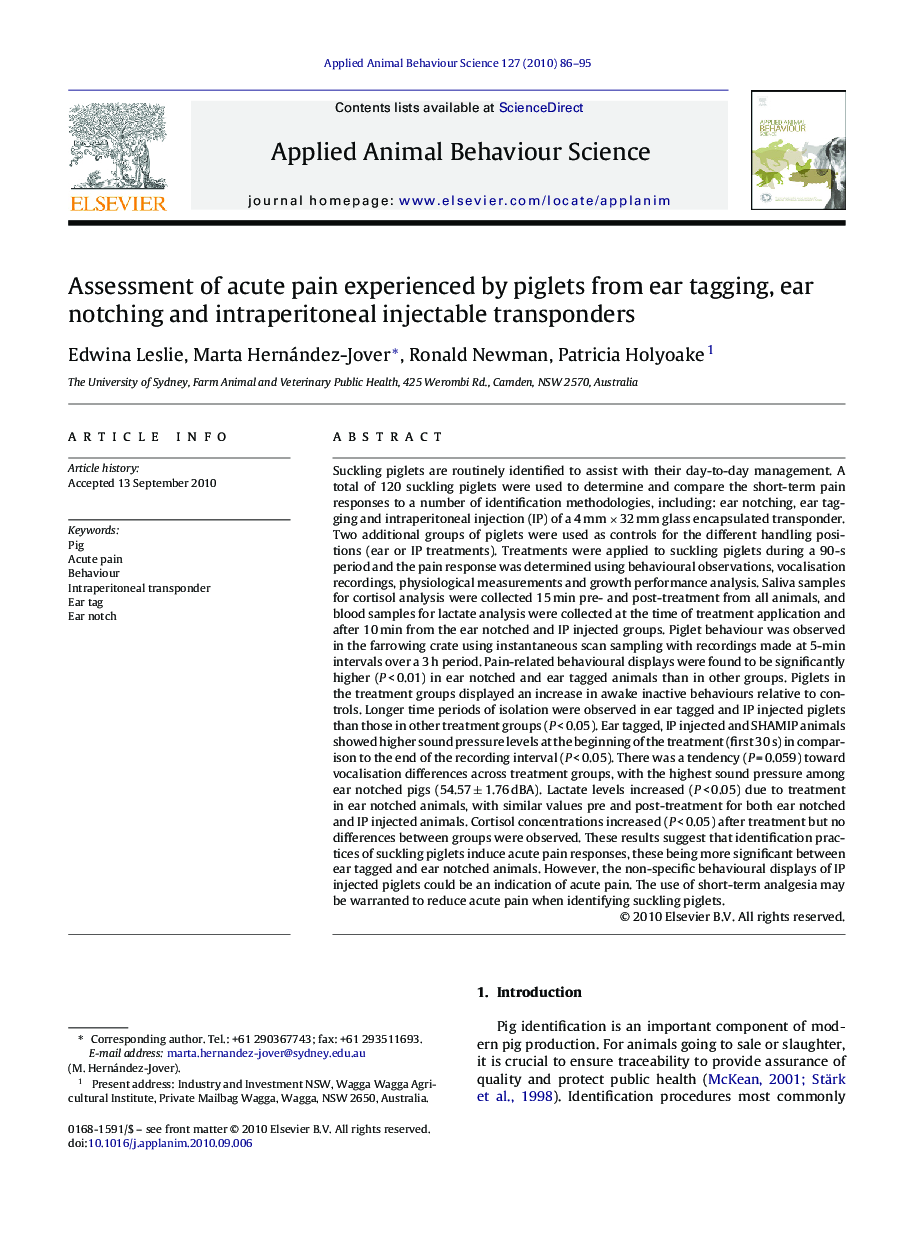| Article ID | Journal | Published Year | Pages | File Type |
|---|---|---|---|---|
| 4523298 | Applied Animal Behaviour Science | 2010 | 10 Pages |
Suckling piglets are routinely identified to assist with their day-to-day management. A total of 120 suckling piglets were used to determine and compare the short-term pain responses to a number of identification methodologies, including: ear notching, ear tagging and intraperitoneal injection (IP) of a 4 mm × 32 mm glass encapsulated transponder. Two additional groups of piglets were used as controls for the different handling positions (ear or IP treatments). Treatments were applied to suckling piglets during a 90-s period and the pain response was determined using behavioural observations, vocalisation recordings, physiological measurements and growth performance analysis. Saliva samples for cortisol analysis were collected 15 min pre- and post-treatment from all animals, and blood samples for lactate analysis were collected at the time of treatment application and after 10 min from the ear notched and IP injected groups. Piglet behaviour was observed in the farrowing crate using instantaneous scan sampling with recordings made at 5-min intervals over a 3 h period. Pain-related behavioural displays were found to be significantly higher (P < 0.01) in ear notched and ear tagged animals than in other groups. Piglets in the treatment groups displayed an increase in awake inactive behaviours relative to controls. Longer time periods of isolation were observed in ear tagged and IP injected piglets than those in other treatment groups (P < 0.05). Ear tagged, IP injected and SHAMIP animals showed higher sound pressure levels at the beginning of the treatment (first 30 s) in comparison to the end of the recording interval (P < 0.05). There was a tendency (P = 0.059) toward vocalisation differences across treatment groups, with the highest sound pressure among ear notched pigs (54.57 ± 1.76 dBA). Lactate levels increased (P < 0.05) due to treatment in ear notched animals, with similar values pre and post-treatment for both ear notched and IP injected animals. Cortisol concentrations increased (P < 0.05) after treatment but no differences between groups were observed. These results suggest that identification practices of suckling piglets induce acute pain responses, these being more significant between ear tagged and ear notched animals. However, the non-specific behavioural displays of IP injected piglets could be an indication of acute pain. The use of short-term analgesia may be warranted to reduce acute pain when identifying suckling piglets.
